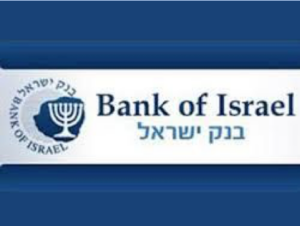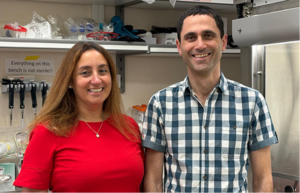Growth rate: 3.2% in 2015 according to Bank of Israel report

This document presents the forecast of macroeconomic developments compiled by the Bank of Israel Research Department in December 2014. The forecast was presented to the Monetary Committee on December 28, 2014, during its meeting prior to the decision on the Bank of Israel interest rate for January 2015. According to the staff forecast, gross domestic product (GDP) is projected to increase by 2.5 percent in 2014, and by 3.2 percent in 2015, and 3.0 percent in 2016. The rate of inflation over the next year (ending in the fourth quarter of 2015) is expected to be 1.1 percent. The Bank of Israel interest rate is expected to be 0.25 percent during 2015.
@font-face { font-family: “Cambria Math”; }p.MsoNormal, li.MsoNormal, div.MsoNormal { margin: 0cm 0cm 0.0001pt; text-align: left; font-size: 12pt; font-family: “Times New Roman”; }p.MsoFootnoteText, li.MsoFootnoteText, div.MsoFootnoteText { margin: 0cm 0cm 0.0001pt; text-align: left; font-size: 10pt; font-family: “Times New Roman”; }span.MsoFootnoteReference { font-family: “Times New Roman”; vertical-align: super; }span.NotedebasdepageCar { }.MsoChpDefault { font-size: 11pt; }div.WordSection1 { page: WordSection1; }
Forecast
The Bank of Israel Research Department compiles a staff forecast of macroeconomic developments on a quarterly basis. The staff forecast is based on several models, various data sources, and assessments based on economists’ judgment.[1] The Bank’s medium scale DSGE (Dynamic Stochastic General Equilibrium) model developed in the Research Department—a structural model based on microeconomic foundations—plays a primary role in formulating the macroeconomic forecast.[2] The model provides a framework for analyzing the forces which have an effect on the economy, and allows the integration of information from various sources into a macroeconomic forecast for real and nominal variables, with an internally consistent “economic story”.
GDP in 2015 is expected to grow by 3.2 percent. Fixed capital formation and exports are expected to contribute to improvement in the pace of growth in 2015. An increase in the growth rate of exports is expected due to improvement in global trade, the depreciation of the shekel that has taken place in the second half of 2014, and the recovery of tourism services that were negatively impacted in 2014 due to Operation Protective Edge. Fixed capital formation is expected to recover in 2015, following a decline in 2014 in both investment in the major industries and in investment in construction. The sharp decline of oil prices is expected to support private consumption, but in contrast, we expect some decline from the high level of purchasesof durable goods in 2014. Further improvement in global trade is expected in 2016, which will support improvement in Israeli exports.
In view of the failure to approve the State budget for 2015 and the announcement of general elections to take place in March 2015, there is a relatively high level of uncertainty regarding fiscal policy. Our assumptions regarding public consumption in the current staff forecast are based on the budget proposal that was approved in first reading in the Knesset. With that, the late approval of the budget for 2015 may lead to government expenses being lower than those included in the most recent budget proposal. In such a scenario, growth in 2015 is expected to be slightly lower, but growth in 2016 is expected to be higher, since the fiscal cuts required in 2016 to meet the expenditure ceiling as per the expenditure rule will be more moderate.
GDP growth is expected to be 2.5 percent in 2014. This projection is slightly higher than the estimate in the previous forecast (at the end of September), which was 2.3 percent. A main contributing factor to this is the upward revision of GDP growth data in the first half of the year as published by the Central Bureau of Statistics. We estimate that Operation “Protective Edge” in the third quarter of the year detracted about 0.3 percent from annual GDP, mainly due to a negative impact on the export of tourism services and on private consumption. In contrast, growth in the purchases of durable goods, particularly automobiles, contributed to growth in private consumption in 2014. Based on the Research Department’s assessment, the recovery of activity from its relatively low level in the third quarter of 2014, due to Operation Protective Edge, will be expressed in a relatively high growth rate over the coming quarters (beginning with the fourth quarter of 2014).







